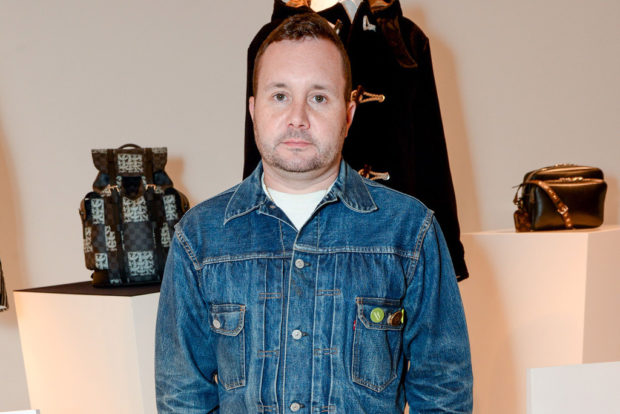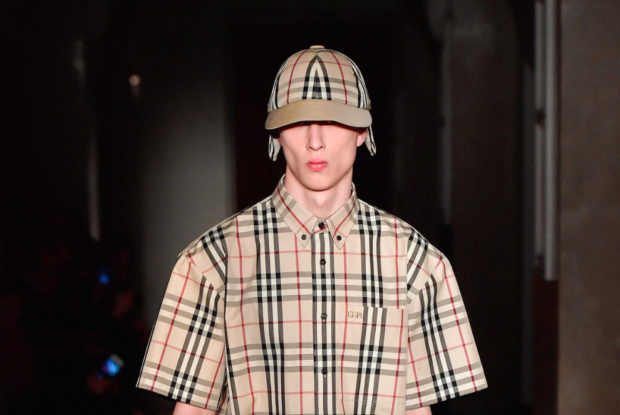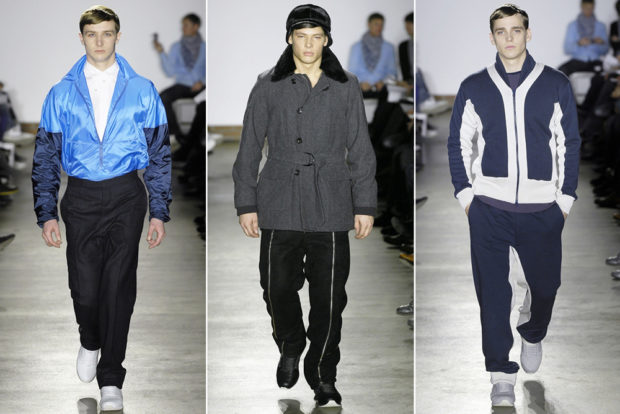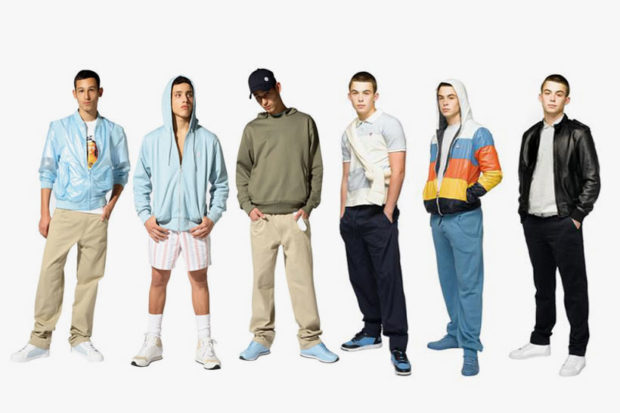Kim Jones is undoubtedly one of the most influential figures in the world of fashion today. During his 7-year tenure as Men’s Artistic Director at Louis Vuitton, Jones has fused the worlds of streetwear and high fashion together in a way that the other heads of legendary fashion houses or founders of streetwear brands can only dream of. From a cult classic collaboration with Hiroshi Fujiwara’s Fragment, to the heavy streetwear influence in LV’s collections with pieces like bomber jackets, souvenir jackets and all-over prints being sent down the runway and last year’s extensive, culture-shifting Supreme collaboration, Kim Jones undoubtedly has his finger on the pulse of cool.
However all good things must come to an end … and Jones announced earlier this month that following his Fall/Winter 2018 showing in Paris he would be stepping down from his position at Louis Vuitton. The timing of the announcement (just days before the show) couldn’t have been more perfect, as Jones’s final collection with Louis Vuitton was well-received by fashion critics and industry insiders alike and featured cameos from legendary supermodels like Naomi Campbell and Kate Moss (both pictured above). Many referred to the collection as Jones’s “love letter” to the brand, and his exit, much like the collection, was executed perfectly.
After the show was over, and the reality Jones’s departure from Louis Vuitton began to set in, the never-ending rumor mill began to churn. Where would Jones wind up next? Would he strike out on his own, relaunching his eponymous label with seed money from investors? Would he fill an empty position at Versace? Would he go off the grid in 2018, only to triumphantly re-emerge later with more legendary projects? There’s many an interesting theory on Kim Jones’s next move, but we’ve got a strong hunch that we know what he’ll be doing next: moving to Burberry.
Yes, Burberry. The iconic British brand known for their signature plaid and their equestrian knight logo. A brand that’s established a place in popular culture and will always boast an extremely loyal following, but one that’s in need of a breath of fresh air that only a street-savy creative lead like Jones can inject into a company. Jones’s timing lines up perfectly, as Burberry’s current creative lead Christopher Bailey is set to step down in March, a mere 6 weeks after Jones became a free agent.
But it’s more than just perfect timing. There’s nobody in the industry more qualified to right the ship at Burberry than Kim Jones. Why? The answer to that question is not a short one. Kim Jones is the ideal candidate to lead Burberry not only because of his unique design touch, but because he’s the perfect person to tackle their colorful history, full of soaring highs and swooping lows. To understand why Jones is the perfect choice you don’t only have to understand his history – you have to understand Burberry’s history as well.
Designer and brand hail from the same area. Born and raised in London, Jones attended Central St. Martins, a legendary London-based art school while working for Gimme 5, a distributor widely hailed as an early driving force in British streetwear. Burberry was founded in Basingstoke (about 45 miles outside of London) in 1856, but moved operations to London proper in the 1890’s. The brand and the city have always been tied together for better or worse, and that’s something Jones, a native Londoner can understand better than most.
Much like their iconic plaid, Burberry’s past with London is checkered. In the early 00’s before street culture and high-end fashion were intertwined in the fashion they are today, Burberry’s stock, both financial and social took a steep plunge in the mid 00’s. The brand became associated with “chavs,” a derogatory nickname for a low-income group who fancied brand names, loud prints, cheap jewelry and soccer games, essentially the British version of what Americans would call “white trash”. This negative connotation scared away buyers and high-end clients, nearly tarnishing the brand’s name beyond repair. Things got so bad that many pubs and clubs would turn away any patron wearing the Burberry check at the door.
The chavs generally fancied lower price point Burberry garments, usually adorned with the camel check pattern (maximum branding effect for the lowest dollar amount possible), and that combined with the massive amount of counterfeit products adorned with that same pattern was enough to turn the brand on its head. It became far too accessible both in the UK and around the world, and came to represent tacky excess: high-priced, middling to poor quality goods worn by consumers with questionable taste. In the late 00’s, Burberry stock was worth less than half of what it sells for today, and the brand was in dire straights.
However, everything in fashion moves in circles, and under Christopher Bailey’s creative leadership and a breath of fresh air in the form of new CEO Angela Ahrendts, Burberry was eventually able to regain their lost stature. By lowering the number of plaid garments made to 5-10% of their total collection and reigning in their distribution, they managed to increase their brand’s prestige once again, reclaiming their rightful place among high-end fashion’s elites.
The brand continued business as usual until 2017, when the unveiling of a S/S ’18 collaboration with red-hot Russian designer Gosha Rubchinksiy raised eyes and hackles around the fashion industry. The “chav check” had returned. With the lines between high fashion and streetwear blurred nearly to the point of invisibility, Burberry let Gosha bring back a pattern that they once nearly swore off of, and although the collection (officially released earlier this month) did sell well and generated a great deal of buzz, Burberry faced flak for appropriating a culture that they once openly despised. Luxury brands pulling inspiration from the streets is nothing new, but luxury brands embracing what they once openly despised? That’s a different ballgame altogether, and a puzzle that nobody’s better equipped to piece together than Kim Jones.

Burberry is currently in a state of flux, and in need of a new guiding hand. Their sales dipped in 2017 but their brand name holds high value again, their goods are coveted, and their collaborations with influencers like Blondey McCoy (who painted the mural above as part of a Burberry-sponsored series) and Kris Wu are achieving their desired impact. They need to maintain some sense of street credibility, as their target menswear consumer is much younger than before … but they simply cannot risk their prestige. That’s where Kim Jones, the master of mixing the streets and the runway, the man who understands the brand’s history comes in. The brand has gone through an interesting life cycle, falling out of favor because of their “chav” association, and (in a great stroke of irony) then using that same association to regain popularity.
As mentioned at the top of this article, Kim Jones just flat out gets what “cool” is. He’s one of the first high-end designers to openly pay homage to the streets that fashion houses have always stolen so much from without providing proper credit, but he does so without losing any of the historical luxury touch that made the brand so iconic in the first place (something that he likely picked up during his time at Alexander McQueen and Hugo Boss). Some streetwear old heads may kick up a fuss about his mixing of two different cultures and label him a “culture vulture” (a dreaded term) who steals from the streets, but that’s simply not true.
Kim Jones has always been very open and honest about where his influences come from (for example he frequently speaks on how his collections are inspired by his experiences while traveling), and that’s why his work resonates with a wide swath of consumers, from street to boardroom. Just take a look at his pre-Louis Vuitton streetwear track record: his aforementioned eponymous label (pictured above) mixed streetwear with luxury with athletic wear, presenting a vibe that Jones said was inspired by the 90’s raves he used to attend. Sound like Gosha before Gosha was a thing to you?
He pioneered the modern-day athlesure trend in 2004 with his Umbro collaboration (also pictured above). He spent time at Iceberg, your favorite 90’s rapper’s favorite brand. He even worked on Kanye West’s mysterious Pastelle line (where he originally met Virgil Abloh), which never saw the light of day but will forever hold a place in streetwear lore. If given the job (which we’re sure he will be if you’d like to place a bet with us), Kim Jones will have to use both his streetwear and high-end smarts to acknowledge Burberry’s past (both the good and the bad) while pushing forwards to its future.
It’s all about collabs, celebrities and co-signs in 2018, and with Kim Jones’s network, featuring names like Supreme, Hiroshi Fujiwara, and Virgil Abloh , Burberry would have all three of those things in spades … or should we say in checks? They can’t pretend like their past didn’t happen, but they must embrace both the good and the bad before they can move on, and nobody would deny that Kim Jones would be the perfect man to handle that task.
What do you think of Kim Jones? Did you enjoy his work with Louis Vuitton? Do you agree that he’ll be moving to Burberry, or do you see him winding up somewhere else? If so, where? Sound off in the comments or hit us up and let us know on Twitter!
Share KicksOneTwo







